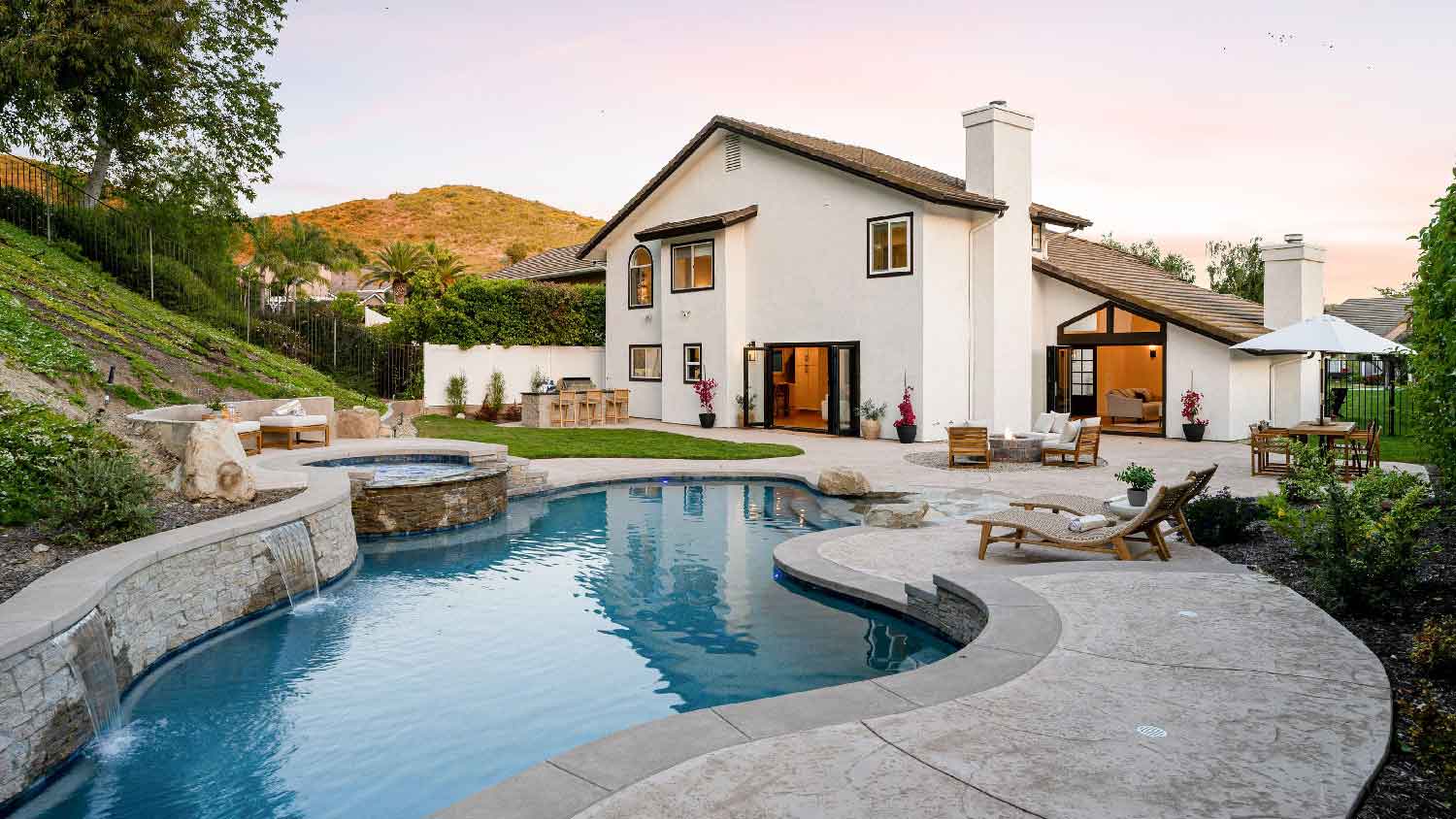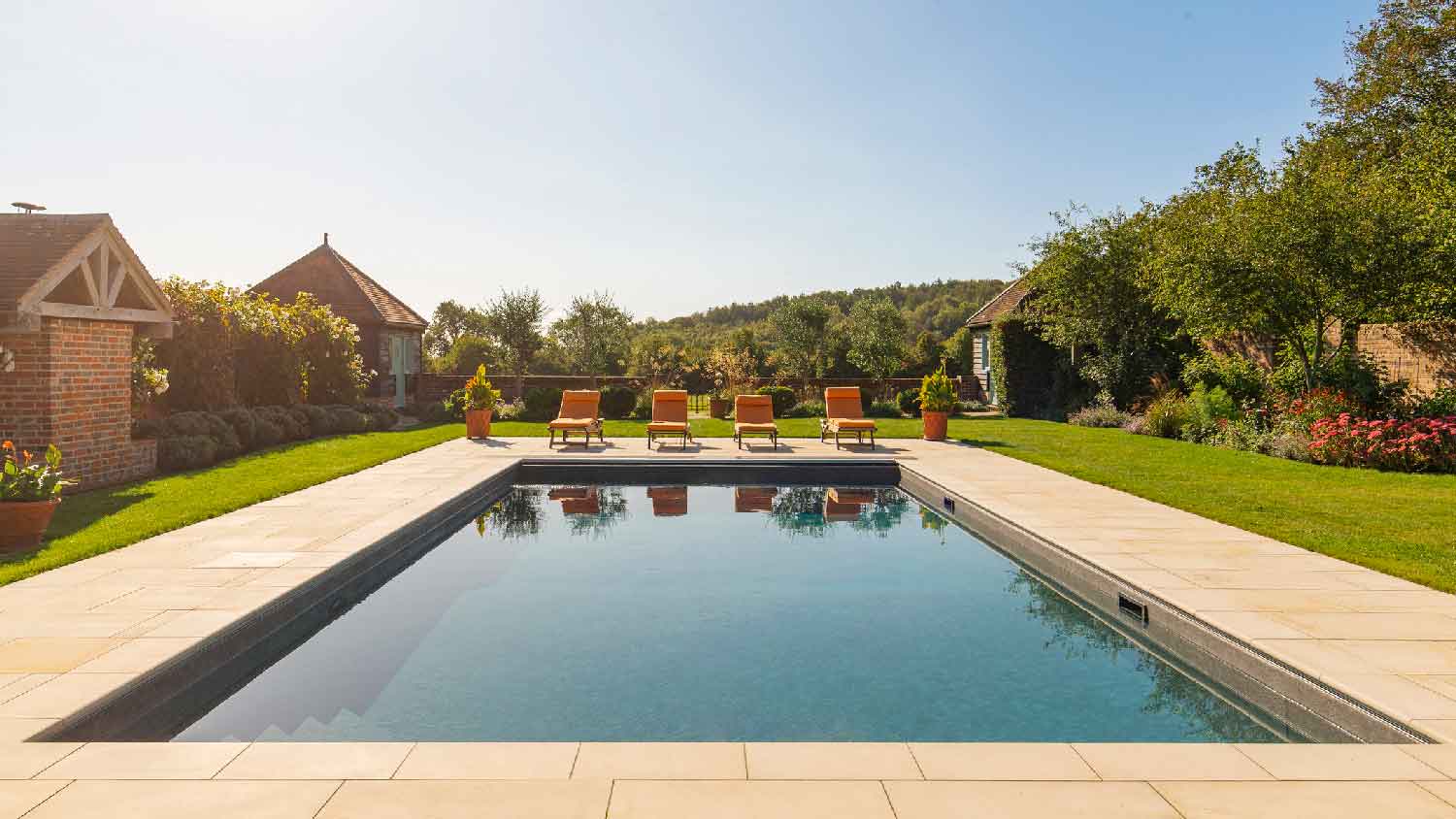8 Tips for Installing a Sauna: Know the Dos and Don’ts
Relaxation is just a sauna away


If you’re considering installing a sauna, either indoors or outdoors, know your options so you can make the best decisions and be able to relax and enjoy your sauna. Choosing the location, wood, and type of sauna while balancing your budget will affect the final outcome. These eight sauna tips will help you get the most out of your sauna experience.
1. Decide Between a Traditional or Infrared Sauna
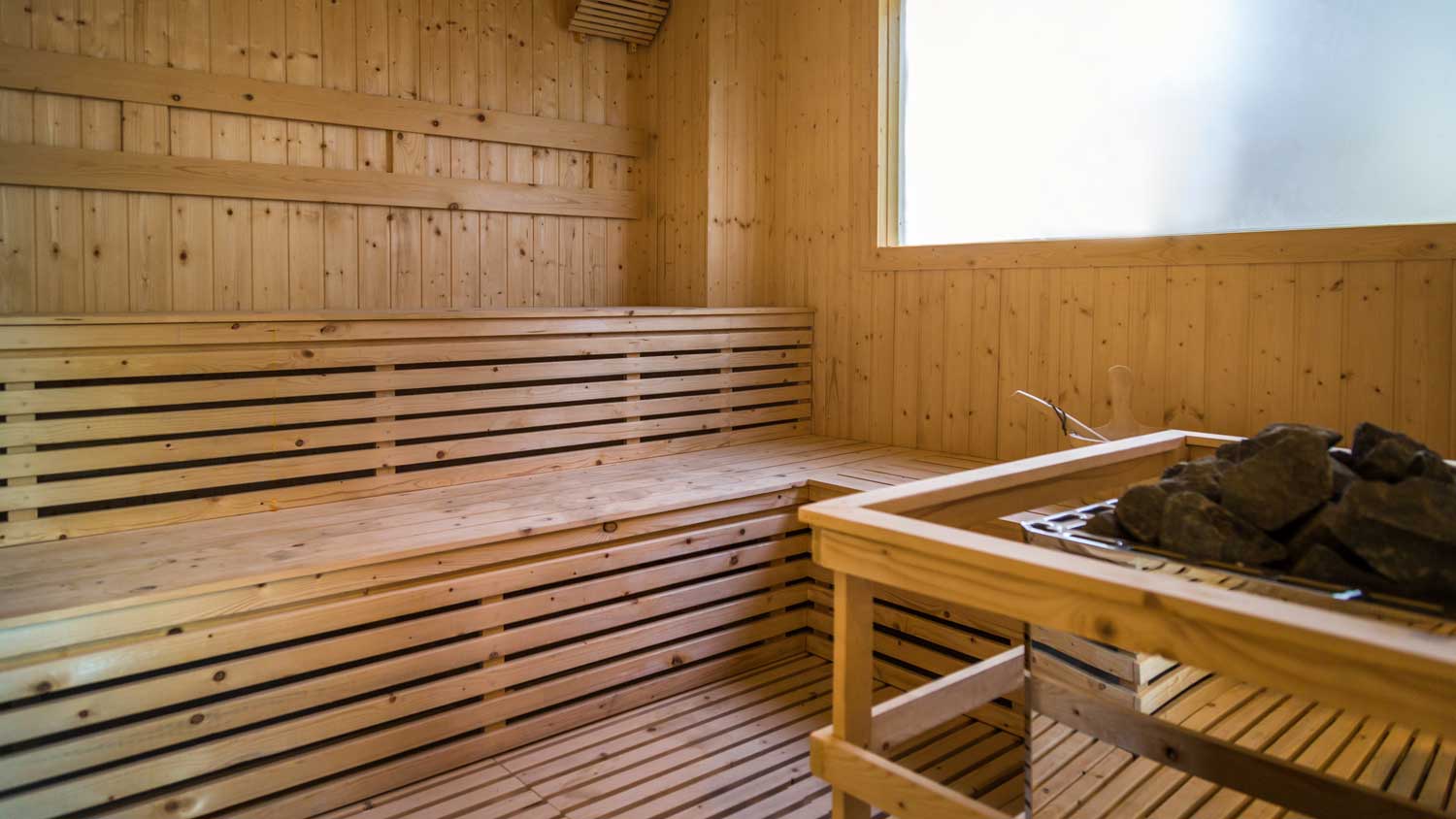
Traditional saunas burn wood to heat the space and come with the option to increase humidity by pouring water on hot stones to produce steam. Infrared saunas use light to heat the body from the inside. Infrared saunas don’t get as hot and don’t have a steam option. Electric saunas use electronic temperature controls and may also include hot stones to create humidity.
| Traditional Sauna | Electric Sauna | Infrared Sauna |
|---|---|---|
| Between 140–170 degrees | Between 140–170 degrees | Between 120–140 degrees |
| Option to add humidity with steam | Option to add humidity with steam | Lower heat means longer sessions |
| Burns wood for heat | Easy to use temperature controls | Heats the body from inside rather than the surrounding air |
| More traditional option | More modern option | More modern option |
2. Choose a Location That Best Fits Your Needs
Another major decision is whether you want an indoor or outdoor sauna. Both types of saunas have pros and cons, so let’s take a look.
Indoor Sauna
An indoor sauna is ideal because it is easily accessible year-round and in any weather. They’re also more convenient if installed in a bathroom and near the shower for rinsing off after a sauna session. Depending on the available space, you can install indoor saunas in a spare room, garage, attic, or basement. This may require modifying the structure of the house and ensuring proper electricity and ventilation are available.
Outdoor Sauna
Outdoor saunas are more in keeping with the Finnish sauna tradition and add a beautiful aesthetic feature to your yard or deck. But accessing them means braving the weather, and you’ll need a flat, stable foundation. Getting them hooked to electricity may also require more work, but ventilation won’t be as challenging.
3. Research Wood Options
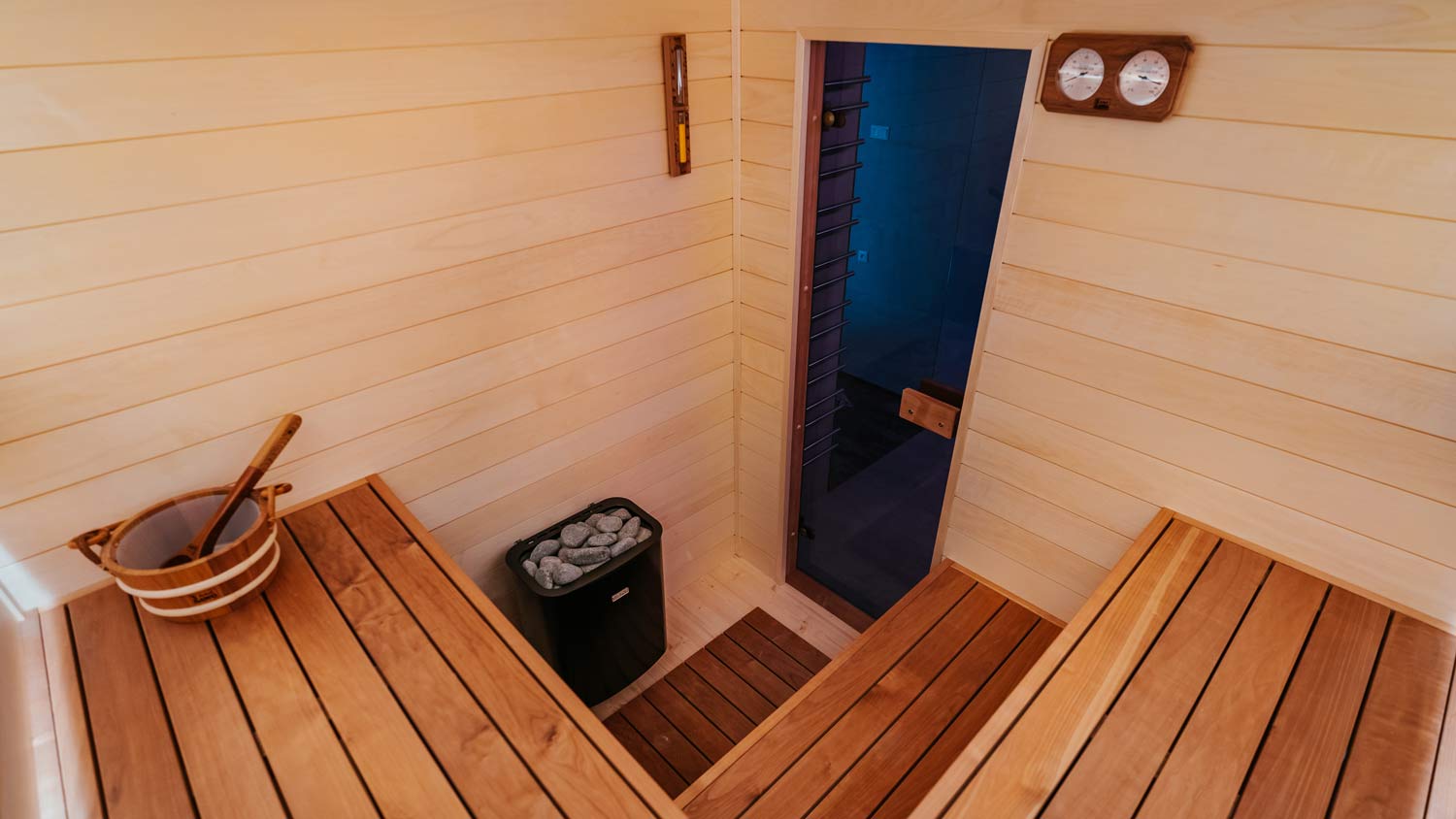
Softwood is ideal for a sauna and insulates the unit to keep in as much heat as possible. Popular types of sauna wood include cedar, aspen, hemlock, magnolia, and fir. These woods will resist warping or rotting when in contact with heat and humidity.
Don't skimp on your sauna materials. Softwoods like cedar, spruce, or hemlock don't conduct as much heat, keeping your sauna warm and steamy.
Spruce and pine are other options, but they tend to secrete sap or warp. They’re more affordable than other types of wood but may require more maintenance. However, thermally-treated spruce and pine are more comparable to more durable woods.
Some woods, like aspen, hemlock, and spruce, are lighter, while others, like western red cedar and black alder, offer reddish tones. Magnolia and pine are darker woods that provide added elegance. Choosing the right wood for you comes down to the cost, color, and durability.
4. Check Electrical and Ventilation Requirements
Hire an electrician to wire the sauna to a circuit breaker in the electrical panel. Electric and infrared saunas use between 15 and 20 amps while wood-burning saunas use between 30 and 50 amps. An electrician will check your home's electrical capacity to ensure it can support a sauna while meeting code.
A well-ventilated sauna allows air to circulate, otherwise hot air will rise and cold air will sink. There are many factors to consider when ventilating a sauna, including the type and location of the heater and the type of sauna. It’s best to consult a sauna installer to ensure you have an adequate ventilation system. An improperly ventilated sauna can reduce oxygen levels in the sauna, causing discomfort and dangerous levels of carbon monoxide in extreme cases.
5. Don’t DIY This One

While handy DIYers may have the skills to build a sauna, home sauna installation is likely a job better suited to professionals. Sauna installation requires installing the wood walls, benches, heater, electricity, and drainage.
If you’re wondering who to call to install a sauna, you can look up sauna installation companies near you. An installation company can also help plan your sauna and choose between infrared or traditional units.
6. Check Your Budget
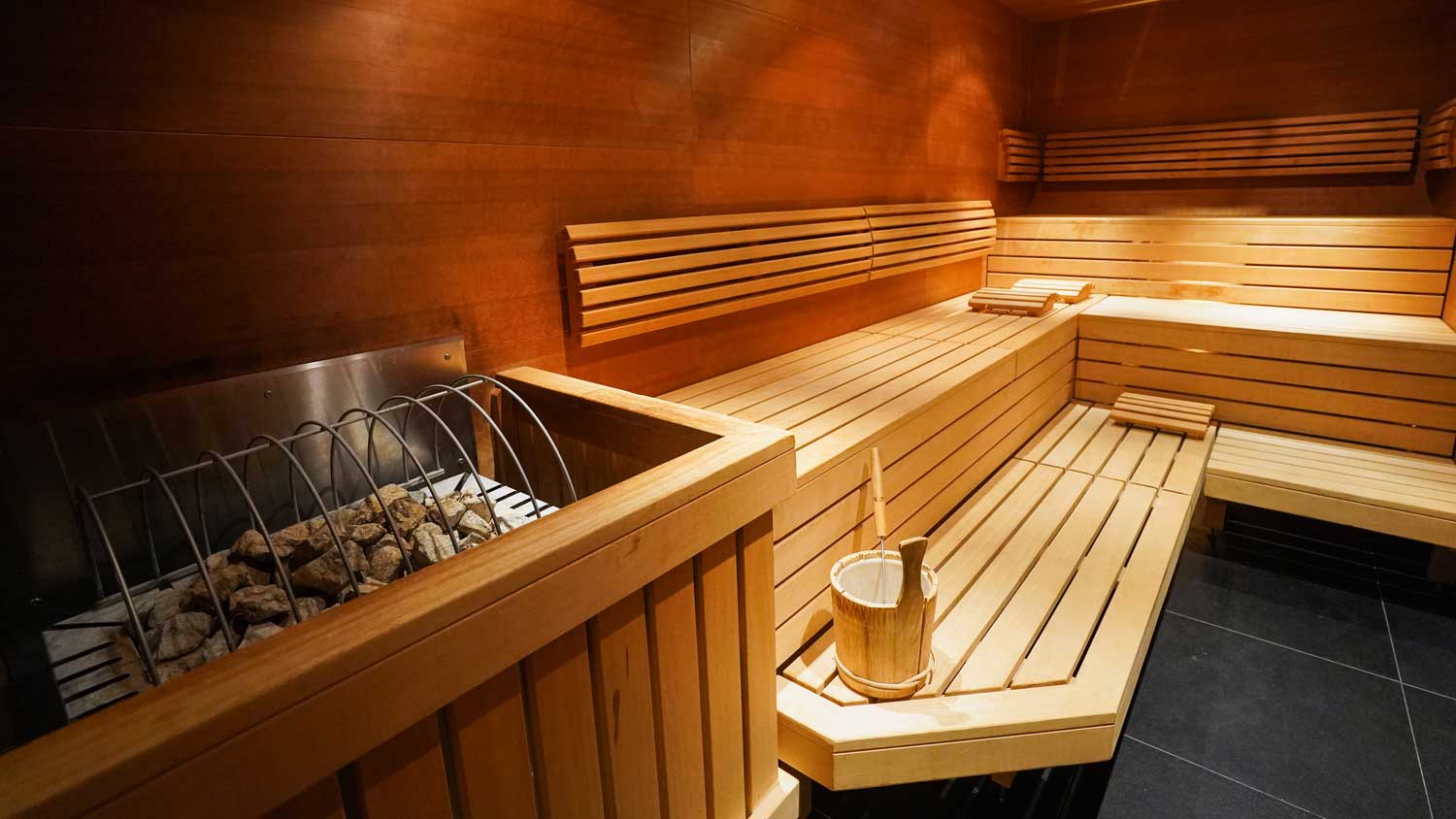
The cost of installing a home sauna falls between $1,500 and $10,000, depending on the size, type of sauna and wood, and level of customization. If you’re in it solely for the benefits of relaxation and want to start as soon as possible, choosing a lower-priced sauna can help you get started. But if you have room in your budget, you can customize different elements like lighting and accessories.
7. Customize to Your Heart's Content
If you’re ready to customize (after making the major decisions above), there are many ways to tailor the final look of your sauna. Saunas appear similar thanks to their signature wood slat design, but there are many ways to customize the final look. Here are a few things to consider:
Bench configuration: Benches can line the walls, create multiple levels, and meet in the corners. Consider who will be using the sauna as you determine seating options. Some benches are curved to create a more ergonomic place to sit.
Lighting: Sauna lighting stands up to heat and humidity, and you can choose from several style and placement options. Leave lights visible or shaded with vertical slat light shades or other shade options.
Doors: You can choose a wood or glass door.
Accessories: You can line some or all of the walls with Himalayan salt. There are a variety of sauna clocks, rocks, signs, buckets and dippers, and thermometers to choose from that can add beautiful details and practicality to a sauna.
8. Don’t Sleep on Maintenance
A sauna isn’t high maintenance, but you’ll need to wipe down the benches and leave the door open to let it dry out after each use. Taking off your shoes and laying down a towel between you and the bench can help keep the sauna free from dirt and stains.
Regular sauna maintenance can include cleaning the interior with a mild cleaner. If you plan on cleaning your sauna with a hose, installing a drain can make the job much easier.


